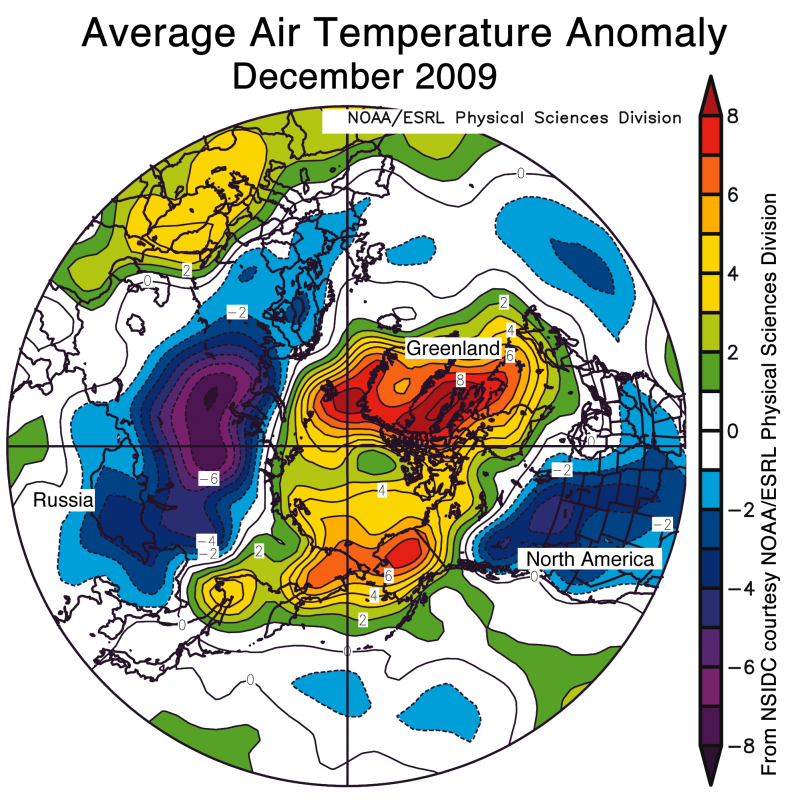
Credit: National Snow and Ice Data Center courtesy NOAA/ESRL Physical Sciences Division
A dramatic increase in methane gas is seeping from the Arctic seabed off Siberia. The BBC reports the evidence from measurements of carbon fluxes around the north of Russia.
Methane is 20 times more potent a greenhouse gas than CO2.
Worst of all, the latest research by Igor Semiletov (University of Alaska Fairbanks and head of the International Siberian Shelf Study) finds the shallow arctic shelves are shooting methane to the surface and the atmosphere without first getting sequestered in the ocean as dissolved CO2—as happens in deeper ocean waters.
Siberia’s shallow seabed contains tons of frozen methane hydrates. But these waters are warming and the frozen methane is thawing. Last decade’s highest-ever recorded temperature rise began to thaw some of the organic material frozen in underwater sediments, releasing methane into the sea, from there into air.
Higher concentrations of atmospheric methane are a global warming trigger, which in turn melts more permafrost (topside and underwater), creating a nasty, brutish, and potentially short positive feedback loop.
(I’ve blogged about the methane problem a bunch of times and wrote about it in depth in The Thirteenth Tipping Point, including the worst-case scenario of a tipping point being passed and suddenly dumping billions of tons of methane. We know this happened once before, resulting in the worst mass extinction in Earth’s history.)
Combine this study with the National Snow and Ice Data Center report yesterday that December 2009 saw average air temperatures over the Arctic Ocean way higher than normal. Grim.














